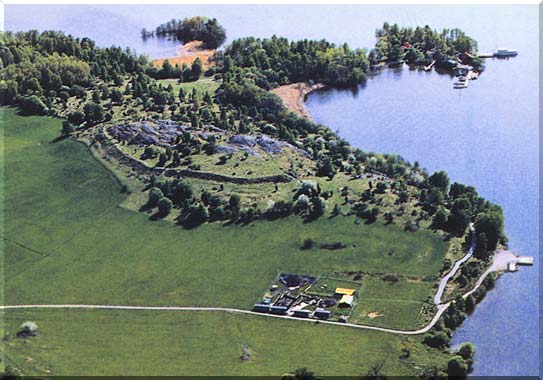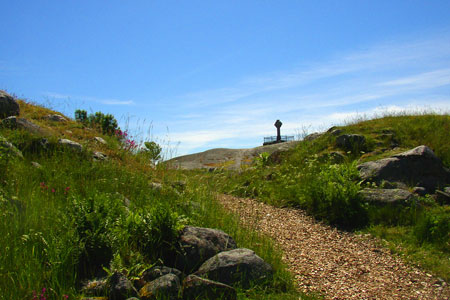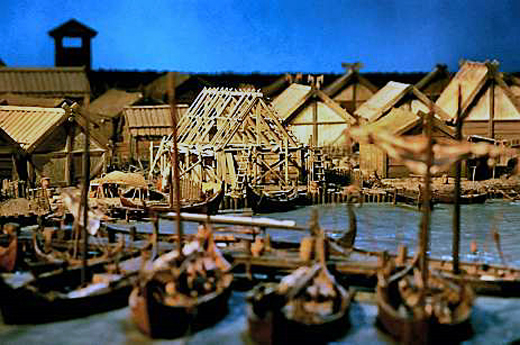New discoveries revolutionize Birka image
The Viking city Birka, close to present day Stockholm may have been much larger than earlier thought.
-
 New discoveries at Birka show that the Viking town was much bigger than previously thought, and that it had a complex harbor. Birka, located on the island of Björkö was an important trading center, which handled goods from Scandinavia as well as central and eastern Europe and Asia. Björkö is located in Lake Mälaren, 30 kilometers (18.6 miles) west of contemporary Stockholm, in the municipality of Ekerö. The archeological sites of Birka and Hovgården, on the neighboring island of Adelsö, make up an archeological complex, which illustrates the elaborate trading networks of Viking Scandinavia and their influence on the subsequent history of Europe. Generally regarded as Sweden's oldest town, Birka (along with Hovgården) has been a UNESCO World Heritage Site since 1993.
New discoveries at Birka show that the Viking town was much bigger than previously thought, and that it had a complex harbor. Birka, located on the island of Björkö was an important trading center, which handled goods from Scandinavia as well as central and eastern Europe and Asia. Björkö is located in Lake Mälaren, 30 kilometers (18.6 miles) west of contemporary Stockholm, in the municipality of Ekerö. The archeological sites of Birka and Hovgården, on the neighboring island of Adelsö, make up an archeological complex, which illustrates the elaborate trading networks of Viking Scandinavia and their influence on the subsequent history of Europe. Generally regarded as Sweden's oldest town, Birka (along with Hovgården) has been a UNESCO World Heritage Site since 1993. -
-
Marine biologists have discovered a gigantic harbor area in the Viking town of Birka. The town was three times bigger than earlier believed, and it was, much like Stockholm, built on water. Ongoing archeological excavations in the bay outside of Birka at the lake Mälaren, have led to discoveries that will rewrite history, as a previously unknown part of the town is being unveiled.
-
 The Ansgar Cross at Birka, Björkö, near Stockholm.
The Ansgar Cross at Birka, Björkö, near Stockholm. -
-
The excavations show Birka as being much more of an important commercial center than prior discoveries have led us to believe. Says Andreas Olsson, one of the marine biologists:
“What we are doing now is looking at the last great discovery of Birka under the water. The remains of the harbor constructions show that it was really a harbor, not like previously thought only a set of bridges by the beach and a pole further out in the lake for protection.” -
 Photo courtesy of The National Historical Museum, Stockholm, Sweden.
Photo courtesy of The National Historical Museum, Stockholm, Sweden. -
Andreas and his team can now safely say, that Birka’s harbor was an enormous construction with docks, piers and bridges, all powerful constructions showing that the harbor might have been the most important area of the town. What are some of the discoveries then? Well, chests made of stone have been found deep in the water, timber, logs, and poles. Nobody thought that the Vikings were capable of building stone chests and to put down poles on 8 meters (26 feet) depths in the water. The stone chests functioned as foundations for the bridges and the docks. Andreas says they are currently trying to solve exactly what the harbor construction looked like.
-
-
